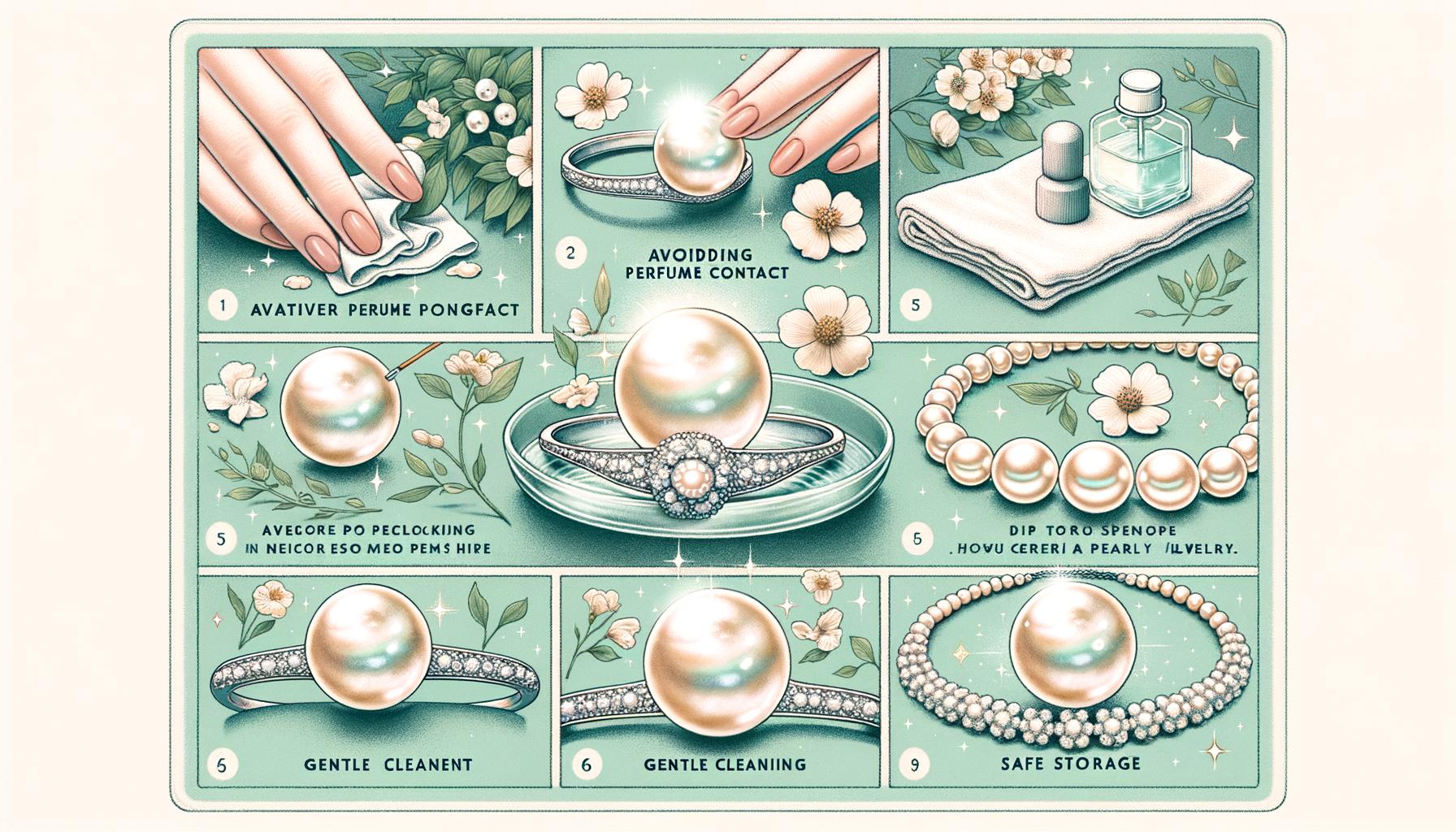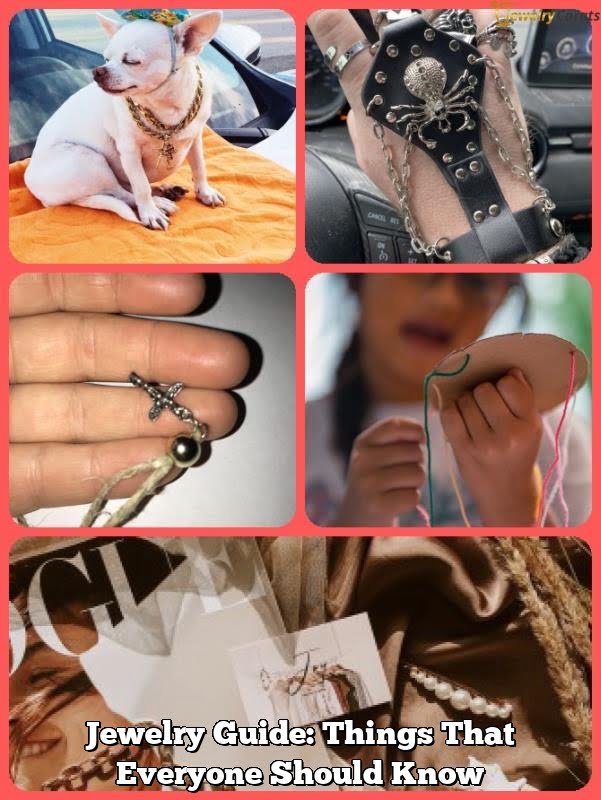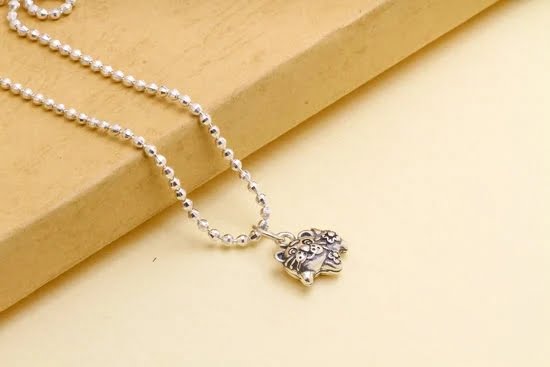Pearls have captivated hearts and adorned human beings for centuries, emerging as a symbol of elegance, purity, and sophistication. These unique gemstones, created by mollusks beneath the sea, possess an intrinsic value that goes beyond their monetary worth; they radiate with a natural beauty that is both timeless and ethereal.
However, owning pearl jewelry is not just about showcasing these stunning pieces but also involves dedicating oneself to their proper care. Caring for your pearls adequately ensures their longevity and retains the iridescent luster that makes them so special.
In “The Ultimate Guide to Caring for Pearl Jewelry,” we delve into the essential practices every pearl owner should know to maintain their cherished adornments in pristine condition. Pearls are delicate gems; unlike other precious stones or metals, they require meticulous attention due to their organic nature and sensitivity to environmental factors. Neglecting proper care can lead to diminished shine, discoloration, or even damage that diminishes the overall allure of your pearl jewelry.
This comprehensive guide will take you through an array of vital topics related to pearl maintenance. From understanding different types of pearls and daily care tips to cleaning techniques, storage solutions, and handling methods-each section is crafted with precision to arm you with knowledge.
We will explore the nuances between freshwater and saltwater pearls, explain the significance of professional upkeep, and provide troubleshooting advice for common issues at home. Whether you’re a seasoned collector or a first-time owner entranced by these gleaming gems’ beauty, this guide offers everything you need for impeccable pearl preservation.
Understanding Different Types of Pearls
The beauty of pearl jewelry captivates many, but to truly appreciate and care for these gems, understanding their various types is essential. Generally, pearls are categorized into two primary groups: freshwater and saltwater pearls. Freshwater pearls are typically found in lakes and rivers, primarily in regions like China.
These pearls tend to be more affordable and come in a diverse range of shapes and colors due to the less controlled environment in which they grow. On the other hand, saltwater pearls-like Akoya, Tahitian, and South Sea varieties-are cultivated in oceans and are often prized for their superior luster and more uniform shape.
Natural pearls form organically within wild oysters or mussels without human intervention. These are incredibly rare and command high prices due to their uniqueness. Conversely, cultured pearls result from a deliberate process where an irritant is manually inserted into the mollusk to initiate pearl formation. While they may lack the exclusivity of natural pearls, cultured pearls are prevalent in the market because this method allows for more reliable production.
Caring for different types of pearls requires attention to their specific needs. Freshwater pearls generally need frequent cleaning as they can accumulate residue more quickly than denser saltwater variants. Saltwater pearls often benefit from storage in slightly humid conditions to prevent dryness that could lead to cracking or peeling. As such, customizing care routines according to the type of pearl not only preserves their beauty but also extends their lifespan.
- Freshwater Pearls: Found commonly in lakes/rivers; varied shapes/colors; need frequent cleaning
- Saltwater Pearls: Includes Akoya, Tahitian, South Sea; superior luster/uniformity; require humid storage
- Natural Pearls: Form organically without human intervention; extremely rare/high value
- Cultured Pearls: Produced by inserting an irritant into mollusks; widespread market availability
Understanding these distinctions forms a vital part of the ultimate guide to caring for pearl jewelry as it equips you with specific knowledge on how best to manage your precious items based on their unique characteristics.
Daily Care Tips
Pearls are delicate and deserve special attention to maintain their beauty. For everyday wear, one of the best practices is to apply makeup, perfume, lotion, and hair products before putting on your pearl jewelry. This minimizes exposure to chemicals that can dull their luster. It’s equally important to remove your pearls before engaging in activities that may cause them to be scratched or exposed to harsh substances, such as swimming, exercising, or cleaning.
To keep your pearls clean after each use, gently wipe them with a soft cloth dampened with water. This will help remove any oils or sweat from the skin that might have transferred onto the pearls during the day. Avoid using abrasive materials or harsh chemical cleaners as they can damage the nacre. If your pearls require more thorough cleaning, referring to our section on cleaning pearls safely will provide you with a detailed process to follow.
When it comes to storing your pearl jewelry, proper storage solutions are vital in preventing damage and tangling. Always store pearls separately from other jewelry pieces to avoid scratching their surface. Using a soft pouch or a lined compartment within your jewelry box is ideal for this purpose. To add an extra layer of protection and prevent tarnish:
- Use anti-tarnish strips within the storage box.
- Opt for individual silk or felt-lined compartments.
- Ensure the storage environment is not overly dry or humid.
By adhering to these daily care tips outlined in the ultimate guide to caring for pearl jewelry, you can help ensure that your precious pieces remain beautiful and lustrous for years to come.
Cleaning Pearls Safely
When it comes to maintaining the luster and beauty of your pearls, proper cleaning techniques are crucial. Unlike other gemstones, pearls are delicate and require special care during the cleaning process to avoid damage. The ultimate guide to caring for pearl jewelry emphasizes gentle cleaning methods that preserve the nacre and prevent scratches or dullness.
To begin with, always use a soft, damp cloth for routine cleaning after wearing your pearls. This helps remove any residual body oils or dirt that can accumulate on the surface. Avoid using abrasive materials like paper towels; instead, opt for microfiber or chamois cloths specifically designed for fine jewelry. A little lukewarm water can be added if necessary, but ensure that you wring out excess moisture before wiping down each pearl.
For deeper cleaning sessions, prepare a mild solution of lukewarm water and a few drops of gentle dish soap. Submerge a soft brush-such as a makeup brush-into this mixture and gently scrub each pearl individually. It’s important not to soak the entire strand in water because excessive moisture can weaken the silk threading over time. After scrubbing, rinse each pearl carefully with clean water and pat them dry with a soft cloth.
It’s also vital to sidestep common pitfalls that could harm your pearls during cleaning. Never expose your pearls to harsh chemicals or ultrasonic cleaners typically used for other types of jewelry. Additionally:
- Avoid household cleaners: Common household products like bleach or ammonia can erode the outer layer of nacre.
- Steer clear of steamers: High temperatures from steam cleaners can damage pearls’ organic structure.
- Handling precautions: Always handle your pearls with clean hands to minimize oil transfer from skin, preserving their natural sheen.
By following these steps meticulously, you will maintain your pearls’ timeless elegance while ensuring they remain an enduring part of your collection for years to come.
Proper Storage Techniques
Ideal Storage Conditions
Storing your pearl jewelry correctly is essential to maintaining its luster and longevity. Pearls thrive in environments with moderate humidity because extreme dryness can cause them to become brittle and crack, while excessive moisture may lead to mold growth and tarnishing.
To create the ideal storage conditions, consider using a soft cloth pouch or a lined jewelry box specifically designed for pearls. Ensure that your storage area is not exposed to direct sunlight or excessive heat, as these elements can affect the delicate nacre layer of the pearls.
Organizing Your Jewelry Box
Organization plays a pivotal role in ensuring that your pearl jewelry remains in pristine condition. When arranging your jewelry box, allocate separate compartments exclusively for pearls. This segregation prevents pearls from rubbing against harder gemstones or metals that could scratch their surface.
If you don’t have a multi-compartment jewelry box, wrap each piece individually in a soft cloth before placing it in the box. This simple practice helps mitigate tangling and surface abrasions, keeping your jewelry collection neat and ready to wear.
Using Anti-Tarnish Strips and Soft Pouches
Incorporating anti-tarnish strips into your storage routine can be particularly beneficial for mixed-material pieces containing both pearls and metal components prone to tarnishing. These strips release harmless compounds that neutralize tarnish-causing gases within enclosed spaces such as drawers or small boxes, adding an extra layer of protection for your valuable items.
Additionally, employing breathable soft pouches made from natural fabrics like cotton or silk ensures minimal friction while allowing air circulation around each item. These steps are quintessential parts of the ultimate guide to caring for pearl jewelry, ensuring each piece remains radiant through the years.
Handling Pearls With Care
The Impact of Skin Oils on Pearls
Every time you wear your precious pearls, they come into contact with the natural oils from your skin. While these oils can enhance the luster initially, excessive exposure may lead to a buildup that eventually dulls the surface. To mitigate this, make it a habit to wipe your pearls gently with a soft cloth after each wear. This simple routine can help you maintain their mesmerizing glow and prevent any long-term negative effects.
Protecting Pearls From pH Levels and Chemicals
Pearls are susceptible to damage from acidic environments and certain chemicals found in everyday beauty products like perfume, hair spray, and even cosmetics. These substances can erode the delicate nacre over time, causing irreversible harm. To protect your pearls, always apply lotions, perfumes, and other beauty products before putting on your pearl jewelry. Make sure they are fully absorbed or dried before adorning yourself with these timeless treasures.
Minimizing Handling Risks
Handling pearls carefully is integral to maintaining their pristine condition. Avoid tugging on pearl strands or allowing them to dangle freely when not worn; such actions can strain the string holding them together or even cause them to rub against rough surfaces and get scratched.
Instead, handle them by gently holding individual pearls or by supporting necklaces fully in the palm of your hand. Adopting these careful handling techniques will substantially reduce the risk of accidental damage and help in preserving their unparalleled beauty for generations.
By adopting these recommendations as part of your routine jewelry care regimen, you’ll ensure that every piece remains a dazzling testament to sophistication and elegance-truly making ‘the ultimate guide to caring for pearl jewelry’ indispensable for every pearl enthusiast.
Special Considerations for Pearl Strands
Importance of Restringing Pearls Regularly
Pearl strands, whether worn as necklaces or bracelets, require regular restringing to maintain their integrity and prevent loss. Over time, the silk or nylon threads that pearls are strung on can become weakened by wear, exposure to moisture, and the natural acids in your skin.
To ensure your precious pearl strands remain secure and beautiful, it’s essential to have them restrung annually if worn frequently, or every two years at a minimum. This periodic maintenance helps avert any unexpected breakage that could lead to losing pearls.
How to Identify When It’s Time to Restring
Knowing when it’s time to restring your pearls is crucial in the ultimate guide to caring for pearl jewelry. Signs that it might be time for restringing include visible fraying or discoloration of the thread, noticeable gaps between pearls where the knots have loosened, and an overall lack of tension in the strand.
Additionally, if you can move individual pearls along the thread with ease, it’s a clear indication that restringing is overdue. Birthing these signs early not only protects each pearl but also preserves their aesthetic arrangement.
Choosing the Right Thread and Knotting Technique
Selecting suitable materials and methods for restringing is just as important as doing it periodically. Traditionally, fine silk thread has been preferred due to its strength and elegance; however, modern advancements have introduced durable synthetic alternatives like high-grade nylon which can offer enhanced resilience against wear.
Each pearl should be separated by individual knots-this not only secures each pearl in place but also prevents them from rubbing against one another which may cause scratches or damage over time. Ensuring that this knotting technique is used adds both beauty and safety to your treasured strands.
By adhering to these special considerations for pearl strands within the framework of the ultimate guide to caring for pearl jewelry, you significantly extend their lifespan while maintaining their alluring charm.
Long-Term Maintenance and Professional Care
Regular long-term maintenance is crucial for ensuring the longevity and continued beauty of your pearl jewelry. While daily care practices are essential, there comes a time when professional intervention may be necessary. Scheduling annual check-ups with a trusted jeweler can help maintain the pearls’ luster and integrity, ensuring they remain in top condition for generations to come.
When seeking professional care, it’s important to select jewelers who specialize in working with pearls. These experts possess the knowledge and tools required to clean and repair pearl jewelry without causing damage. It’s advisable to inquire about their experience with pearls specifically, as improper handling can lead to irreversible harm. During these visits, ask for ultrasonic cleaning if deemed safe by the jeweler; note that not all pearls can withstand this method due to their delicate nature.
Furthermore, choosing ethical and skilled jewelers supports sustainable practices in the industry. Such professionals are likely aligned with ecological standards and support fair trade, providing you peace of mind knowing your pearls are being cared for responsibly. This step is particularly significant in maintaining not only the material value of your jewelry but also its ethical standing within your collection.
Maintaining pearl jewelry involves regular monitoring for signs of wear and tear such as discoloration or loosened settings. Professional jewelers can restring necklaces when needed, an essential task highlighted in other sections of the ultimate guide to caring for pearl jewelry. Keeping an eye on your pearls’ condition between annual check-ups will ensure they retain their magnificence indefinitely.
| Maintenance Aspect | Detail |
|---|---|
| Annual Checkups | Regular inspections by specialized jewelers |
| Ethical Jewelers | Support sustainability and fair trade practices |
| Ultrasonic Cleaning | Safe under specific conditions confirmed by professionals |
By incorporating these long-term maintenance strategies into your routine, you’re investing in both the physical upkeep and ethical stewardship of your cherished pearl pieces.
Troubleshooting Common Issues
Pearl jewelry, known for its iridescent beauty and sophistication, can sometimes face common issues that diminish its appeal. One frequent problem is luster loss, where pearls lose their shiny surface and appear dull.
This often occurs due to exposure to harsh chemicals, including everyday substances like perfume or hair spray. Avoiding these contaminants can prevent such issues; however, if luster loss has already taken place, gently cleaning the pearls with a damp cloth followed by a mild soap solution may help restore some of their original sheen.
Another typical issue involves chipped or scratched pearls. Since pearls are relatively soft (rated around 2.5-4 on the Mohs hardness scale), they are susceptible to physical damage. To address minor chips or scratches, it’s crucial to consult a professional jeweler who specializes in pearl care. Attempting to fix these defects at home could further damage the delicate gemstones. Regular inspections and gentle handling can reduce the likelihood of such incidents occurring in the first place.
Discoloration is another prevalent challenge with pearl jewelry, which might result from improper storage or exposure to certain environmental factors. Pearls should be stored in a cool, dry environment away from direct sunlight or high humidity areas to maintain their natural color. For discolored pearls, professional cleaning services offer the best solution, as experts possess specialized tools and techniques for restoring pearl appearance without causing further harm.
| Issue | Solution |
|---|---|
| Luster Loss | Clean with damp cloth and mild soap solution; avoid harsh chemicals. |
| Chipped/Scratched | Consult a professional jeweler for repairs. |
| Discoloration | Store in ideal conditions; use professional cleaning services. |
For collectors seeking guidance on maintaining their treasured pieces long-term, “the ultimate guide to caring for pearl jewelry” offers comprehensive insights into preventive measures and solutions for common problems faced by pearl owners everywhere. By adhering to these expert recommendations, individuals can ensure their pearls remain radiant and intact through generations.
Pearl Jewelry Do’s and Don’ts
When it comes to preserving the beauty and longevity of your pearl jewelry, knowing the dos and don’ts can make a significant difference. Pearls are organic gemstones that require special attention due to their delicate nature. Following specific guidelines ensures they maintain their luster and integrity over time.
One of the most important dos is to wear your pearls regularly because natural skin oils help keep them hydrated and lustrous. However, it’s crucial to avoid exposing pearls to substances that may harm them, such as perfumes, hair sprays, or any products containing harsh chemicals.
Always put on your pearl jewelry last when getting ready, giving ample time for lotions or sprays to settle. After wearing pearls, gently wipe them with a soft cloth to remove any residues that may have accumulated during the day.
Additionally, storing pearls correctly is essential for preventing scratches and other damage. Keep them in a soft pouch or wrap them in a gentle cloth before placing them in a separate compartment of your jewelry box. It’s also advisable to fasten strands when storing to prevent tangling. Anti-tarnish strips can be highly effective in maintaining an ideal environment within your storage area.
| Do | Don’t |
|---|---|
| Wear your pearls regularly. | Expose them to perfumes or hair sprays. |
| Wipe pearls with a soft cloth after each use. | Store pearls alongside other hard jewelry. |
| Store in a soft pouch or cloth wrap. | Use abrasive materials for cleaning. |
Following these simple yet effective guidelines from the ultimate guide to caring for pearl jewelry will ensure that your timeless treasures continue to shine brilliantly for generations.
Conclusion
Caring for your pearl jewelry properly is essential to maintain its timeless allure and value. As we’ve explored throughout this comprehensive guide, pearls require delicate and thoughtful care due to their organic nature. By understanding the different types of pearls, implementing daily care routines, cleaning them safely, storing them appropriately, and handling them with gentle consideration, you can ensure that your pearl pieces remain lustrous and exquisite for years to come.
Through the ultimate guide to caring for pearl jewelry, we’ve highlighted key practices ranging from proper cleaning techniques to special considerations for more complex items like pearl strands. Paying attention to these details not only preserves the beauty of your pearls but also honors their significance as cherished keepsakes or investments. Whether you’re addressing common issues or navigating long-term maintenance with professional help, every effort contributes to extending the life of these precious gems.
We encourage you to follow these guidelines and adopt diligent habits in your pearl care routine. Your dedication will be rewarded with consistently radiant and captivating jewelry that stands the test of time.
Additionally, we invite you to share your own tips and experiences in caring for pearl jewelry-your insights could further enrich our collective knowledge on this topic. In conclusion, embracing both the responsibility and joy of maintaining your pearls ensures they continue to sparkle brilliantly in all their natural splendor.
Frequently Asked Questions
What Is the Best Way to Care for Pearls?
The best way to care for pearls involves ensuring they are handled with clean hands to avoid transferring oils and dirt to their surface. Pearls should be stored in a soft cloth pouch or a lined jewelry box to prevent scratching.
It’s important to avoid exposing them to harsh chemicals, such as those found in perfumes, hairsprays, and cleaning agents, as these substances can damage the pearls’ luster. Additionally, it’s advisable to wipe the pearls with a soft cloth after wearing them to remove any sweat or oils.
What Oils Are Safe for Pearls?
Generally, it is important to avoid using oils on pearls because they can cause more harm than good by damaging the nacre or changing the color over time. However, if one feels the need to apply oil for some reason, professional jewelers sometimes recommend a tiny amount of olive oil applied with a very soft cloth as it is gentle and less likely to cause damage.
The key is minimal application and ensuring that any excess oil is thoroughly wiped off.
How Do You Keep Pearls Shiny?
To keep pearls shiny, regular maintenance is key. After each wear, gently wiping pearls with a soft cloth can help maintain their natural luster by removing any body oils or contaminants that might dull their surface over time.
Storing them properly away from other jewelry helps prevent scratches that reduce shine. Occasionally having them cleaned by professionals who know how to handle delicate pearl surfaces without using harsh chemicals can also contribute greatly to maintaining their sheen longer-term.

Welcome to my jewelry blog! My name is Sarah and I am the owner of this blog.
I love making jewelry and sharing my creations with others.
So whether you’re someone who loves wearing jewelry yourself or simply enjoys learning about it, be sure to check out my blog for insightful posts on everything related to this exciting topic!





